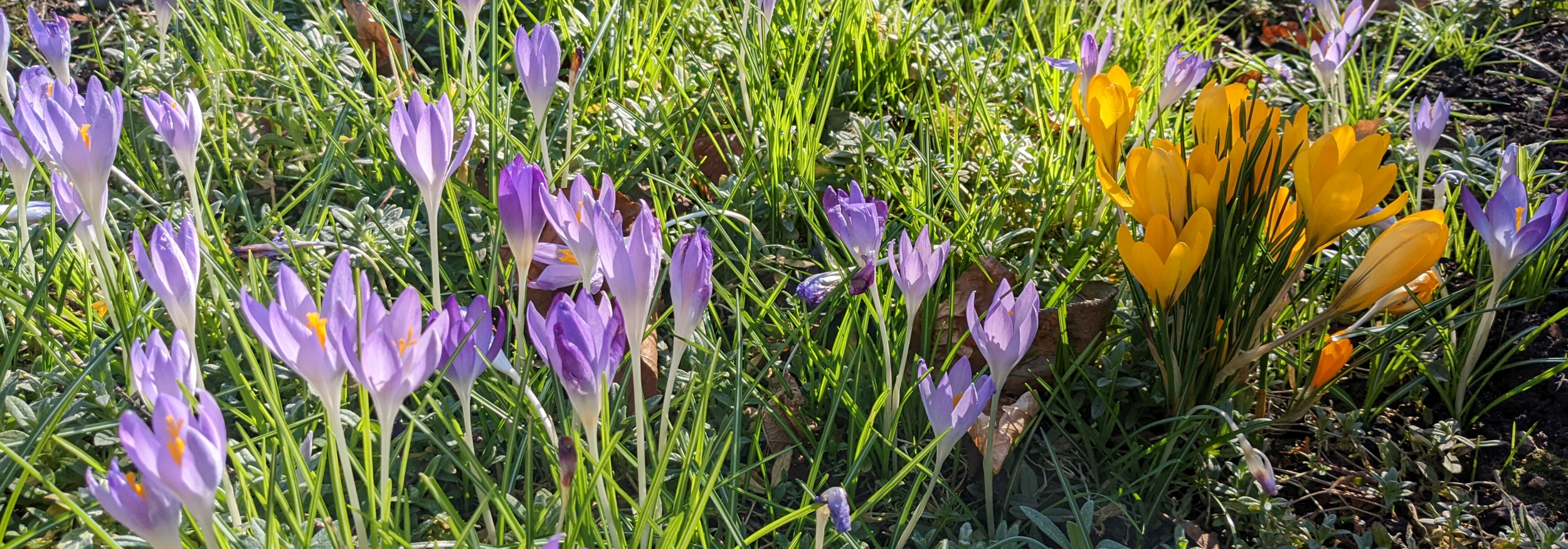Winter Work
/Aconites and Snowdrops, Anne Cotterill (1933-2010), Mill House Fine Art Publishing
Despite often inclement weather, short days and endless mud, winter gardening is essential. Whilst some people hibernate during the dark and cold months, finally peering into the shed around March to see if the mower will start after months of inactivity and desperately looking for that trowel that they were sure that they had put away in its place in September (it will be in the compost heap, if my experience is anything to go by), others are out in all weathers, dressed like the Michelin man, pruning, digging, clearing, planting, planning, having bonfires, preparing for the new year, and, in my case, running out of winter before everything is achieved… We all know that the rewards later in the year make up for aching backs and cold fingers & toes.
Beverly Nichols (author, playwright, journalist, composer, public speaker and writer of gardening books) certainly understood how the garden felt about it:
Most people, early in November, take last looks at their gardens and are then prepared to ignore them until the spring. I am quite sure that a garden doesn't like to be ignored like this. It doesn't like to be covered in dust sheets, as though it were an old room which you had shut up during the winter. Especially since a garden knows how gay and delightful it can be, even in the very frozen heart of the winter, if you only give it a chance.
This winter has been characterised by rain and at present, fierce winds. The gusts can do some natural renovation; I lost ½ a greengage tree during Storm Ciara and am writing during Storm Dennis, so who knows what will have happened by the morning. In between the inclement weather have been some beautiful still, dry, sunny days, just right for pruning apple and pear trees (most deciduous trees should be pruned during autumn and winter but leave stone fruit trees and evergreens till the summer and magnolias and walnuts until late summer) and bed clearance.
If you can do nothing else, walk around the garden. Every morning I wander round with the dog and the first coffee of the day, assessing damage, thinking about what needs doing and (my favourite activity) looking for anything new, especially signs that spring is on its way. There are many plants that flower in the dead of winter, too many to list here, but it is worth venturing out to the plant section of garden centres to see what they have on display each month to pick what would look and smell good in your garden.
In my garden, the true harbingers of spring, winter aconites (Eranthis hyemalis), appear in January in the form of tiny yellow buds forcing their way through the soil to carpet the ground for a month or so, before bowing out to snowdrops, hellebores, Iris reticulata and Chionodoxa (glory of the snow) in February. Sarcococca confusa, (sweet box) and Winter flowering honeysuckle (Lonicera fragrantissima) add scent and Japanese quince (Chaenomeles japonica), early flowering daffodils (Narcissus ‘Rijnveld’s Early Sensation’ is reliably early) and Winter jasmine (Jasminum nudiflorum) colour.
Many gardens open in the winter and have areas planted to showcase winter flowering plants. The Millennium walk at Marks Hall, Coggeshall, the Winter Garden at Anglesey Abbey and the Winter Garden at Cambridge Botanic Garden are all easy to reach. Take a look!


